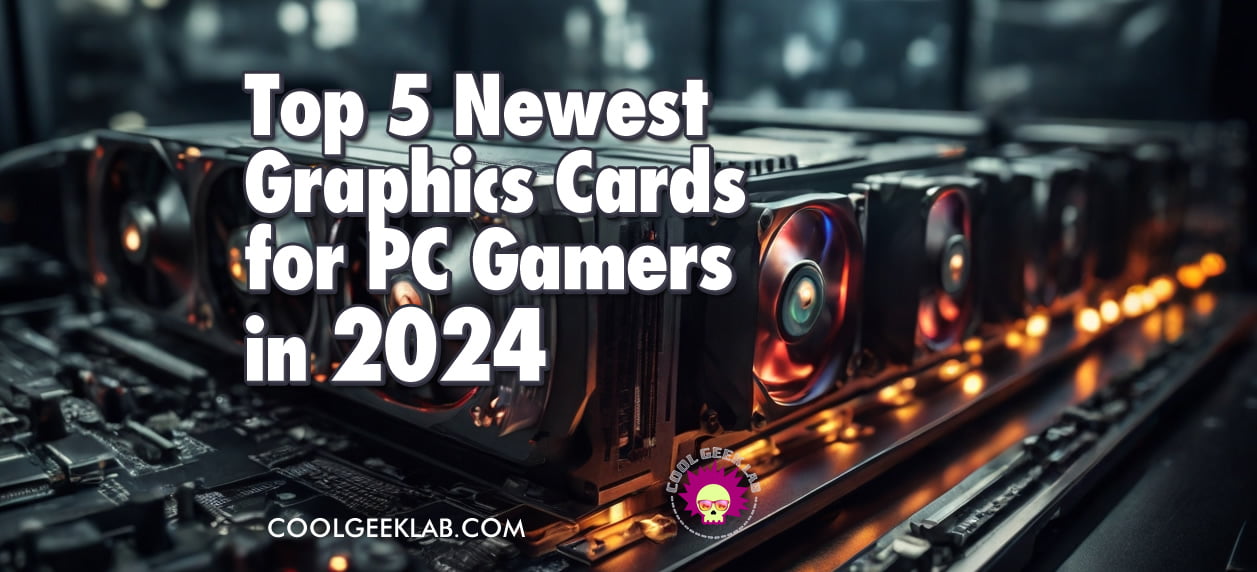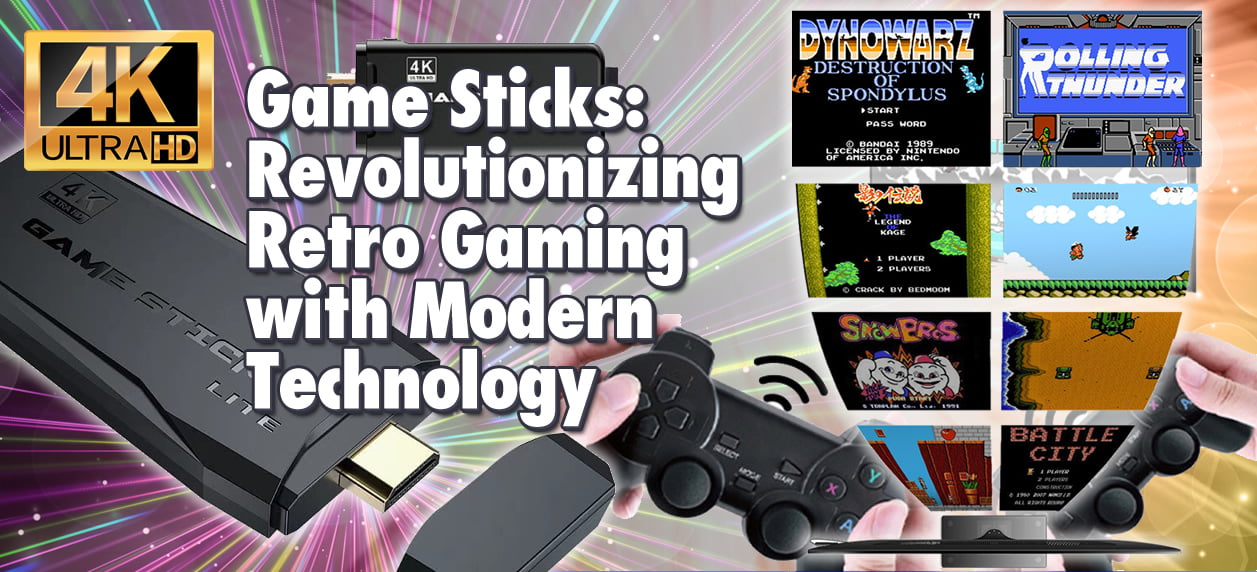The insatiable demand for ever-increasing graphical fidelity and smooth gameplay keeps pushing the boundaries of PC hardware. In 2024, the graphics card landscape is brimming with new contenders vying for the crown of gaming supremacy. Today, we delve into the top 5 newest graphics card releases, analyzing their strengths and weaknesses based on expert and user reviews.
Table of Contents
1. AMD Radeon RX 7900 XTX – Raw Power Unleashed
Product Profile: This flagship monster from AMD boasts top-of-the-line specs, featuring the new RDNA 3 architecture and promising unparalleled performance. With 24GB of GDDR6 memory and 6,144 stream processors, it tackles even the most demanding AAA titles with ease. Ray tracing capabilities are enhanced, delivering more realistic lighting and shadows.

Pros:
- Unmatched Performance: Benchmarks reveal dominance in 4K and even 8K resolutions, making it the undisputed king of raw power.
- Improved Ray Tracing: RDNA 3 architecture offers significant advancements in ray tracing performance compared to previous generations.
- Competitive Price: Compared to its direct Nvidia competitor, the RTX 4090, it boasts a slightly lower price tag, offering better value for extreme performance seekers.
Cons:
- Power Hungry: This beast consumes a hefty 450W, requiring a robust power supply and potentially higher electricity bills.
- Cooling Concerns: Reference design runs hot, and aftermarket coolers might be necessary for optimal performance and noise levels.
- Limited Availability: Initial launch quantities were scarce, leading to stock issues and inflated prices from resellers.
2. Nvidia GeForce RTX 4070 Super – The Sweet Spot?
Product Profile: Nvidia's latest “Super” iteration of the RTX 4070 addresses some key concerns of the original model. It packs more CUDA cores, boosting performance by 10-15%. DLSS 3 upscaling technology gets further refinements, enhancing frame rates while maintaining image quality.

Pros:
- Performance Boost: The Super variant delivers noticeable performance improvements over the standard RTX 4070, making it more competitive with AMD offerings.
- DLSS 3 Advantage: Nvidia's AI-powered upscaling remains ahead of the competition, offering significant frame rate boosts in supported games.
- Better Availability: Compared to the RX 7900 XTX, the RTX 4070 Super seems to be readily available at closer-to-MSRP prices.
Cons:
- Price Premium: The Super variant comes at a higher price point than the original RTX 4070, pushing it closer to the price of the RTX 4080.
- Limited Ray Tracing Improvements: While better than previous generations, ray tracing performance still lags behind the RX 7900 XTX.
- Power Consumption: Although lower than the RX 7900 XTX, its 320W power draw still necessitates a powerful PSU.
3. AMD Radeon RX 7800 XT – Value Champion
Product Profile: Offering the best bang for your buck, the RX 7800 XT delivers impressive 1440p and even some 4K performance at a more palatable price point. It utilizes the RDNA 3 architecture and boasts 16GB of GDDR6 memory, making it a solid choice for mid-range to high-end gaming rigs.

Pros:
- Excellent Value: Delivers outstanding performance for its price, making it a compelling option for budget-conscious gamers seeking high-end visuals.
- Balanced Performance: Handles 1440p and some 4K titles with ease, offering smooth gameplay across various genres.
- Lower Power Consumption: Compared to flagship models, its 300W power draw is more manageable, potentially saving on electricity costs.
Cons:
- Not a 4K Powerhouse: While capable of handling some 4K titles, it might struggle with demanding games at max settings.
- Limited Ray Tracing Performance: Ray tracing capabilities are decent but fall short of the RX 7900 XTX and even the RTX 4070 Super.
- Availability Fluctuations: Stock availability has been inconsistent, causing price fluctuations and making it challenging to find at MSRP.
4. Nvidia GeForce RTX 4060 Ti – Balancing Budget and Performance
Product Profile: The RTX 4060 Ti positions itself as a solid mid-range contender, targeting 1080p and some 1440p gameplay with the added benefit of DLSS 3 support. Powered by the Ada Lovelace architecture and armed with 8GB of GDDR6 memory, it strives to offer a balanced performance package for budget-conscious gamers.

Pros:
- 1080p Powerhouse: Delivers smooth and impressive visuals for competitive and demanding titles at 1080p resolution.
- 1440p Capable: Handles some modern 1440p games with decent frame rates, especially when leveraging DLSS 3 upscaling technology.
- DLSS 3 Advantage: Nvidia's latest AI-powered upscaling significantly boosts frame rates in supported games, enhancing smoothness without sacrificing image quality.
- Cost-Effective: Priced more competitively compared to higher-tier counterparts, making it an attractive option for value-oriented gamers.
Cons:
- Not a 4K Contender: Struggles with demanding games at 4K resolution, limiting its appeal to high-resolution enthusiasts.
- Limited Ray Tracing: While present, ray tracing performance falls short of AMD and Nvidia's flagship models, offering less immersive lighting effects.
- Power Consumption: Although more manageable than top-tier cards, its 250W power draw still necessitates a capable power supply unit.
5. Intel Arc A770 – The Intriguing Newcomer
Emerging as a bold challenger in the graphics card arena, the Intel Arc A770 stands out as a unique option for mid-range to high-end gamers and content creators. Built upon the Xe-HPG architecture, it boasts 16GB of GDDR6 memory and introduces intriguing features like XeSS upscaling technology and AI-powered workload acceleration.

Pros:
- Competitive Performance: Delivers respectable 1080p and even dabbles in some 1440p gaming, offering performance comparable to established mid-range contenders.
- Unique Value Proposition: XeSS upscaling holds potential to rival DLSS, while AI acceleration caters to creative workflows, making it an attractive option beyond just gaming.
- Competitive Pricing: Often available at or below MSRP, the Arc A770 presents an interesting price point for budget-conscious users seeking good value.
Cons:
- New Driver Ecosystem: Being new to the scene, drivers are still maturing, which can lead to potential compatibility issues and performance inconsistencies in some games.
- Limited Ray Tracing: Ray tracing capabilities are present but less advanced than AMD and Nvidia's offerings, offering less immersive lighting effects.
- Uncertain Future Support: As a newcomer, long-term driver support and performance improvements remain to be seen, raising questions about future-proofing.
The Final Verdict
The 2024 graphics card landscape brims with diverse options catering to various needs and budgets. From AMD's raw power to Nvidia's DLSS prowess and Intel's unique features, each contender brings its own strengths and weaknesses. Ultimately, the “best” card hinges on your individual preferences and priorities.
Carefully consider your gaming habits, desired resolutions and frame rates, budget constraints, and openness to new technologies before making your choice. With thorough research and informed decisions, you're sure to find the perfect graphics card to unlock stunning visuals and power your most immersive gaming adventures.
Gamer Insights: How Global Commodities Impact Gaming Hardware Prices
Before diving into the world of cutting-edge graphics cards, let's acknowledge a crucial factor influencing their affordability: global commodity markets. Just like any other tech product, gaming devices are impacted by the cost of raw materials, from silicon wafers to precious metals. In this chapter, we'll delve into the fascinating (and sometimes frustrating) world of commodities and how their ups and downs can affect the price of your dream gaming rig. We'll explore the connection between oil prices, copper mining, and even geopolitical events, offering you a deeper understanding of why your next graphics card might cost a bit more (or less) than expected.
So, strap in and brace yourself for a journey through the intricate web of economics that shapes the gaming landscape!
Remember, knowledge is power – especially when it comes to navigating the ever-changing price landscape of your next gaming upgrade.
Choosing the Right GPU
Remember, the ideal graphics card depends on your individual needs and budget. Consider the types of games you play, your desired resolution and frame rate targets, and your tolerance for graphical compromises. Research benchmarks, read user reviews, and compare features to find the best fit for your gaming aspirations.
Don't forget to factor in factors like power consumption and future-proofing needs, as these can impact your overall experience and potential upgrades.
With the abundance of options available, the perfect gaming graphics card awaits. Choose wisely, and prepare to dive into stunning visuals that elevate your gaming experience to new heights!
GPU FAQ Corner
What is a graphics card and what does it do?
A graphics card is a hardware component that renders images, videos, and animations on your monitor. It consists of a GPU (graphics processing unit) and memory, as well as cooling and power delivery systems. A graphics card is essential for gaming, as it determines how well your PC can handle graphics-intensive tasks and games.
How do I know what graphics card I need?
There are several factors to consider when choosing a graphics card, such as your gaming requirements, preferred resolution, desired frame rate, image quality preferences, and budget. You should also check the compatibility of your graphics card with your PC case, power supply, and monitor. Here are some general guidelines to help you choose the right graphics card:
# If you want to play games at 1080p resolution and 60 fps, you can opt for a mid-range card like the Nvidia GeForce RTX 3060 or the AMD Radeon RX 6600 XT12.
# If you want to play games at 1440p resolution and 60 fps, or 1080p resolution and 144 fps, you will need a high-end card like the Nvidia GeForce RTX 3070 or the AMD Radeon RX 6700 XT12.
# If you want to play games at 4K resolution and 60 fps, or 1440p resolution and 144 fps, you will need a top-tier card like the Nvidia GeForce RTX 3080 or the AMD Radeon RX 6800 XT12.
# If you want to play games with ray tracing, which is a technology that simulates realistic lighting and shadows, you will need a card that supports it, such as the Nvidia GeForce RTX 40-series or the AMD Radeon RX 7000-series34.
# If you want to save some money and don't mind sacrificing some image quality, you can use temporal upscaling technologies like Nvidia DLSS or AMD FSR, which use AI to boost the performance and resolution of games
Q: How do I compare different graphics card models?
There are many graphics card models from different manufacturers, and they may vary in price, features, clock speed, cooling, noise, warranty, and aesthetics. To compare different graphics card models, you can use online tools like [GPU Benchmarks] or [UserBenchmark], which show the performance and ratings of various cards. You can also read reviews from reputable sources like [Tom's Hardware] or [PC Gamer], which provide detailed analysis and recommendations of different cards. Some of the things you should look for when comparing graphics card models are:
# The performance and features of the GPU, which is the most important factor. You should check the number of cores, the clock speed, the memory size and speed, and the support for technologies like ray tracing and upscaling.
# The cooling and noise of the card, which affect the temperature and acoustics of your PC. You should look for cards that have efficient and quiet cooling systems, such as dual or triple fans, heat pipes, or liquid cooling.
# The power consumption and requirements of the card, which affect the electricity bill and the compatibility with your power supply. You should look for cards that have low power consumption and high efficiency, as well as the right type and number of power connectors.
# The size and weight of the card, which affect the compatibility with your PC case and the stability of your PCIe slot. You should look for cards that fit in your case and don't put too much strain on your slot, or use a support brace if needed.
# The warranty and customer service of the card, which affect the reliability and longevity of your card. You should look for cards that have long and comprehensive warranty periods, as well as responsive and helpful customer service.
# The aesthetics and design of the card, which affect the appearance and style of your PC. You should look for cards that match your personal preference and taste, as well as the theme and color of your PC components.




